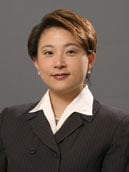Using Formal Models to Study Strategy and Organizations
-
Felipe Csaszar
Associate Professor of Strategy
University of Michigan Ross School of Business
701 Tappan Street #R4336
Ann Arbor, MI 48109-1234
Phone: (734) 615 4854
Email Felipe
Felipe’s WebsiteFelipe Csaszar is an Associate Professor of Strategy at the University of Michigan’s Ross School of Business. His research focuses on how managers’ mental representations and firms’ decision-making structures affect firm-level outcomes such as innovation, speed, and profits. More broadly, he is interested in combining formal modeling and empirical approaches to understand how firms can make better strategic decisions. His work has been published in Management Science, Organization Science, and the Strategic Management Journal. He serves as Senior Editor of Organization Science and as an editorial board member of Strategy Science and the Academy of Management Review.
Before joining the Ross School of Business, Professor Csaszar was Assistant Professor of Strategy at INSEAD. He received his PhD in Strategy from The Wharton School, University of Pennsylvania. Prior to pursuing his PhD, he was head of research of an asset management firm and CEO of an Internet startup.
Abstract:
This presentation discusses the use of formal models in organization theory. Topics covered include: the benefits of using formal models, situations where formal models are more or less appropriate as a research method, and practical considerations regarding how to build models and write about them. Some of the practical considerations discussed include: what makes for a good contribution, how simple the model should be, what is an appropriate structure for a modeling paper, how to ensure the model is well motivated and has external validity, and how to increase the readability and replicability of this type of research.
Digital Reader: Resources Recommended by the Speaker:
- Lave, C. A. and J. G. March (1975). An Introduction to Models in the Social Sciences. Harper & Row, New York.

